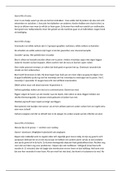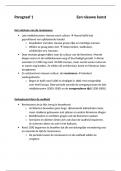Samenvatting
Summary LSE AC100 Financial Accounting Notes (Calculations and Theory)
- Vak
- Instelling
- Boek
Comprehensive notes for AC100 Module 1: Financial Accounting. Includes very detailed notes on calculations (3 statements, double-entries, consolidated balance sheets, and financial ratios) as well as a summary for the theory. These notes are all you need to get a high First in these questions.
[Meer zien]













